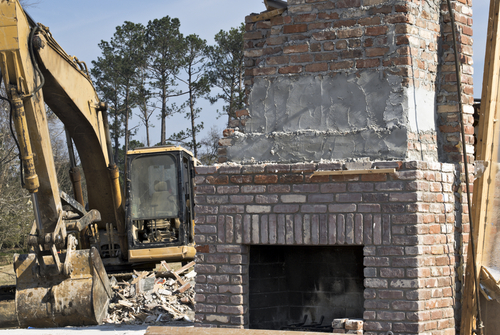 |
1) Stay out of the water. Hurricanes are wet weather events of the highest order bringing both torrential rains and in coastal areas, storm surges that can force feet of water into buildings. This water will likely contain not only solid debris, but also raw sewage, chemicals, and other hazardous substances that can cause diseases and create health hazards. If your business is flooded, wait until the water recedes and public officials give the okay to enter the area before returning to inspect your property for damage.
2) Prepare for debris. Tons and tons of debris waste are the norm with a major hurricane and many communities include management and disposal in their response plans, so check with your municipality ahead of time. Keep in mind that often debris can be recycled such as trees and plants, concrete/asphalt, metal, brick, and sediments/soil. Do not bury or burn debris wastes without authorization. A good example of what types of services to expect from your community can be seen on the Environmental Protection Agency’s (EPA) website for Hurricane Katrina debris at http://www.epa.gov/katrina/debris.html.
Need an answer fast? Relax. Our editors guarantee a personalized response to your questions within 3 business days. Take a free trial of Enviro.BLR.com and see what everyone is talking about. For a limited time, also receive a free 2014 EHS Salary Guide. Download Now.
3) Anticipate mold. Where there is moisture there is going to be mold growth, so understanding the best ways to deal with it can prevent illness and speed cleanup. First, wear an N-95 respirator that fits properly, long gloves appropriate for the type of disinfectant to be used (i.e., chlorine bleach), and goggles without ventilation holes. Next, remove any remaining standing water and allow indoor areas to dry. Since mold can grow on just about anything, everything that has been wet for 24 hours or longer and cannot be cleaned with a disinfectant should be removed and disposed of safely. Keep in mind that mold spores may be on your clothing and hair so thorough washing is required to inhibit spreading.
4) Get the lead out—safely. When you are ready to begin repairs don’t forget that some structures built before 1978 may contain lead-based paint, which is covered under EPA’s Renovation, Repair and Painting (RRP) Rule. This rule applies to contractors working in homes, apartments, and child-occupied facilities, and both requires and prohibits specific work practices to minimize lead contamination. Although there are special emergency exemptions to the rule when there is an immediate safety or public health hazard, if your business is covered by the rule, be sure to hire only RRP-certified contractors.
Everything You Need for Environmental Compliance
Enviro.BLR.com puts everything you need at your fingertips, including practical RCRA, CAA, CWA, hazardous waste regulatory analysis and activity, news, and compliance tools. Try it at no cost or risk and get a FREE report.
5) Beware of asbestos! Asbestos is no longer used in new buildings, however, older structures may still contain it as insulation in walls and ceilings, around piping, in textured paints, vinyl sheeting and flooring, roofing and shingles, and heat-resistant fabrics. In the wake of a hurricane, debris containing asbestos can present a danger to anyone handling, moving, or disposing of the waste. Asbestos is known to cause lung cancer, mesothelioma, and asbestosis, all of which can be fatal. The federal government regulates asbestos through the Occupational Safety and Health Administration’s (OSHA) Asbestos Standard for the Construction Industry, and through the EPA and the Clean Air Act’s (CAA) National Emissions Standards for Hazardous Air Pollutants (NESHAP). NESHAP includes specific standards for both demolition and renovation, as well as for disposal of asbestos wastes. If asbestos is found to be among debris on your site, contact only accredited professionals who have the knowledge and equipment to manage it safely and in compliance with state and federal laws.
